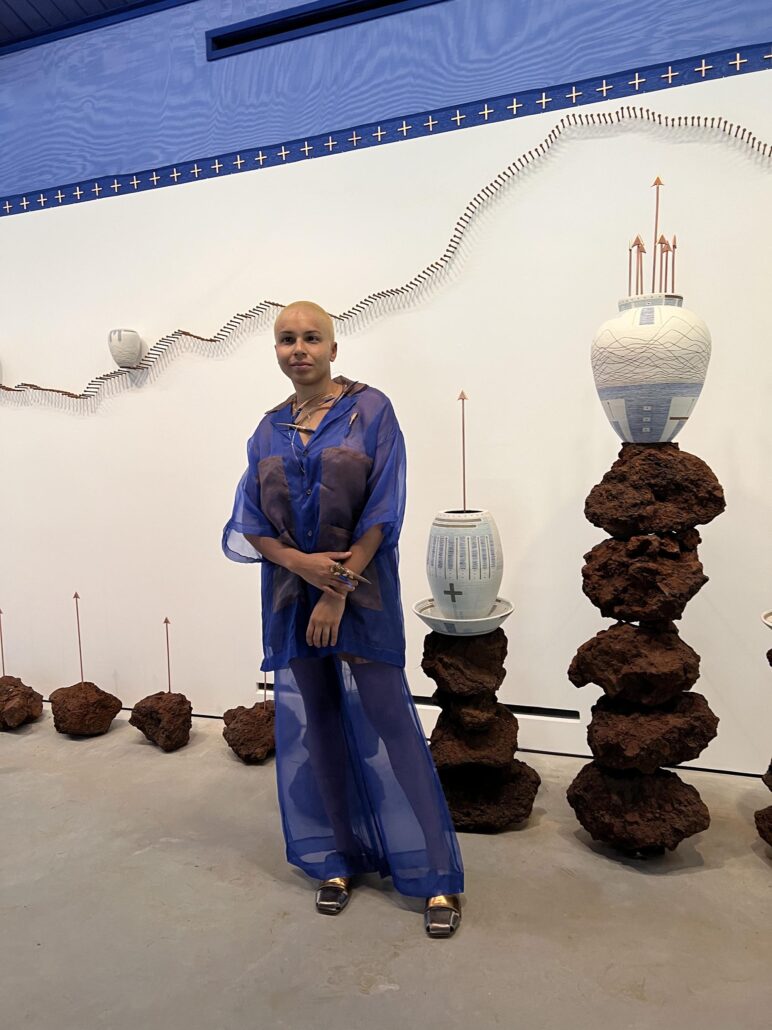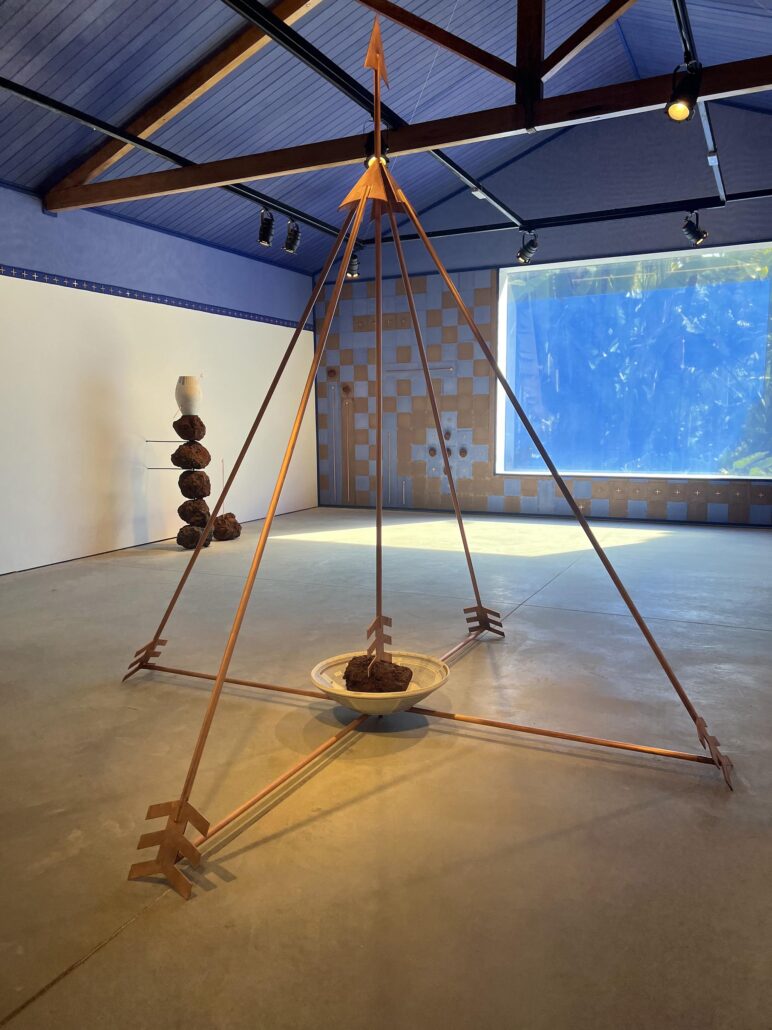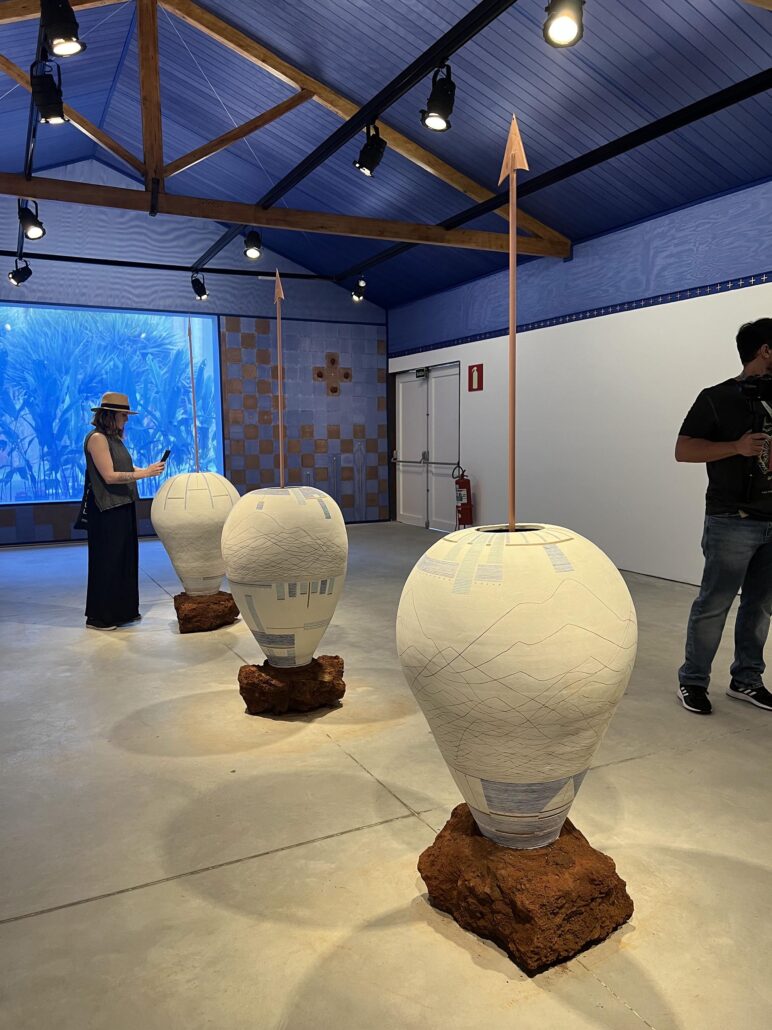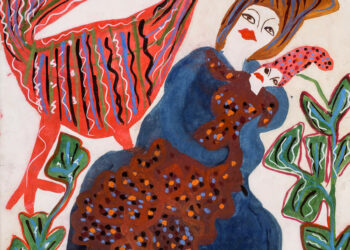Luana Vitra inaugurates the new vocation of the Marcenaria Gallery, which will now host temporary exhibitions

Luana Vitra. © Suzette Bell-Roberts
Luana Vitra grew up in Contagem, a mining town in the region of Minas Gerais, a state of Brazil rich in natural mineral resources. Throughout her childhood, she took careful note of the stories passed down by the community elders. She listened to tales about indigenous knowledge, the atrocities and traumas of slavery that still have a bearing on the community living in the Ouro Preto region where her family lives, and the degradation of the natural surroundings as a result.
Vitra is a storyteller, and her research is closely linked to these oral stories, the legacy of slavery, the extraction of minerals, and the degradation of the environment. She has an inherent belief in spirituality, which is translated throughout her art practice. “My work is like a ritual prayer; I feel and hear the energy of the materials I work with, guiding the direction in which the work takes me. Most people can’t hear this, but I do. I listen and I interpret,” she said during an interview at the opening of her exhibition at Inhotim in Brumadinho, Brazil.
The Inhotim Institute is home to one of Brazil’s largest foundations of contemporary art and one of Latin America’s largest outdoor art centres. It was founded by the former mining magnate Bernardo Paz in 2004 to house his personal art collection but opened to the public a couple of years later. Tivos works mainly with copper, clay and indigo dye. “My father was a lathe worker, I used to watch him turning wood on a lathe and was mesmerised by the process and the transformation of the wood into something of beauty, he taught me to understand the inherent spiritual property of natural resources”, she continued.

Installation view of ‘Giro’. © Suzette Bell-Roberts
The installation is exhibited in a newly renovated woodworking shop at Inhotem and is fitting considering her upbringing and the history of producing wooden objects from natural resources. Occupying the whole gallery, the work was created in collaboration with local artisans. Clay pots made from the mud of the catastrophic collapse of the Córrego do Feijão dam near Brumadinho in 2019, in the Belo Horizonte, Minas Gerais region of Brazil, killing 272 people. A tribute to the consequences of the devastation of mining operations in the area. Large-scale arrows, arranged in a circle and made of copper, point upwards towards the sky. “we step on a land of iron in this region, and this is an aspect that has always guided me”. Copper, the second most conductive metal, represents the work’s energy and positively powers the work. The rounded handles of the arrows follow the influence of her father’s work. Extruding the metal highlights the work, a spiritual reawakening that she feels when working with the material, adding another layer to the voice of nature.
The room is painted indigo blue, creating a calming vibe; blue references the visual phenomenon of the colours of nature, of the fading from green in the foreground to blue in the distance and then white because of visual limitation and atmospheric pollution. “Humans have limited vision, and I use this as a metaphor for the degradation of the territory, sharing my connection with the region full of absences.” Nature influences her work, her spirituality, and the healing she experiences in producing her art. Initially, blue pigment from Nigeria – a by-product of mining and a differential reference to the slaves displaced from Africa to Brazil. More recently, she has been using the blue from the local mines in the area. I use 2 sources of the blue, one from the iron ore and the other from plants. “I am grounded by nature,” she explains. Indigo blue is used in the healing processes of cleansing the soul, an ancient ritual region; blue is about nature. The healing is also about the violence of mining, the potential dangers to the people working there, filling the void of the physical being, and healing the pain that the region’s people feel in the tragedies besetting Minas Gerais.

Installation view of ‘Giro’. © Suzette Bell-Roberts
The clay pots are lined on the inside with white and blue clay and are displayed on clay from the dam left behind after the collapse and iron ore rocks from the mines. The outside of the pots are decorated with unsteady lines echoing the outlines of the surrounding mountains and resembling graphs of seismic measurements of the blasting and changing landscape as a result of the mining – of the scarification left behind – both on the people and the earth in the region.
For more information, please visit Inhotim.
Suzette Bell-Roberts is Co-founder and Digital Editor of ART AFRICA magazine.



